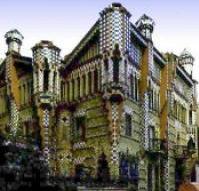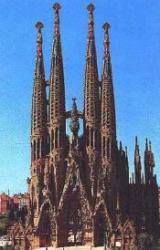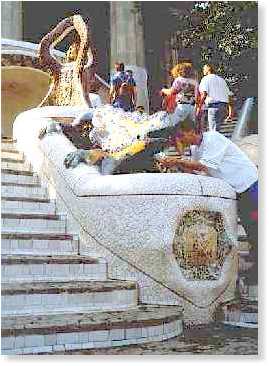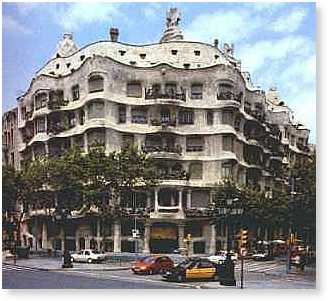|


One of the most unique and fascinating visionary-geniuses, Antonio Gaudi i Cornet, was born on June 25, 1852 in Catalonia to a coppersmith family. From 1874 to 1878, he was educated in Barcelona where Renaixencia, cultural and political renaissance and the anarchist independent movement were at their height.
His architecture was influenced from modernista movement, which was a Catalan version of Art-Nouveau, which shows fascination towards exotic materials, organic forms, life motifs of flowers and plants, geometric ornamentations. The style also sought for a connection between materials and forms. Although his architectural style share some same interests to Art Nouveau, his visionary language was way beyond a single category, and made his works extremely distinctive.
His first major work was Casa Vicens, which was built as a summerhouse of a ceramics dealer. The house still shows a lot of straight lines, which were to be diminished soon, but Gaudi already started to show his unique talent in the use of color and unusual shape into architecture. In his diary, he says that organic forms are important in connection with colors. He continues, color in architecture must be intense, logical, and fertile. which you can see in all of his buildings.
In 1883, Gaudi took over previous neo-Gothic project and started his most significant work of a monumental church of Sagrada Familia. The church is still to this day unfinished due to his sudden death in 1926 and the lost of his plan, but the church shows his interest in nature in organic form of structures in connection with organic colors powerfully to those who stand in front; he used materials from oceans and also built statues from natural beings (animals, plants, etc.). It is also full of symbolism and visual explication of regions faith, which were the very big themes throughout his life. Facades would represent birth, death, and resurrection of Christ. Gothic-like basilicas are rising high to the sky, but they are not as straight as gothic ones.
During his days in Barcelona, he made friends with a wealthy industrialist, Eusebi Guell, and Gaudi made some of the most important works upon requests from this friend. A marvelous Park Guell. The park was originally planned as a part of a residential garden for sixty houses. Here, he made the best use of its land character, and made ornamentation collages made of broken ceramics with various colors and textures. Pavilions look as if they were made out of sugar, and sensually curved benches are worth just to stare at.
His last work as civil architectures was an apartment building in Barcelona, Casa Mila, built between 1906 to 1910. His deep interest in ocean was again clearly expressed throughout this unusual residential building, such as in a faade made of rough-cut stones creating waves, and ornamentations with starfish motif on the wall. On the roof, there sit chimneys resembling knights wearing visors.
Throughout his career, Antonio Gaudi tried to figure out the relations between shape and structure, decorations and their functions. His frequent use of parabolic arch was from his research in structure of natures. Like this, he kept experimenting on new organic materials and shapes like other Art Nouveau artists did, but his work is interesting in the connection with Surrealist as well. He was a truly unique architect, which left the most unusual buildings with fluid lines, and also a sculpt and furniture designer.

 |

